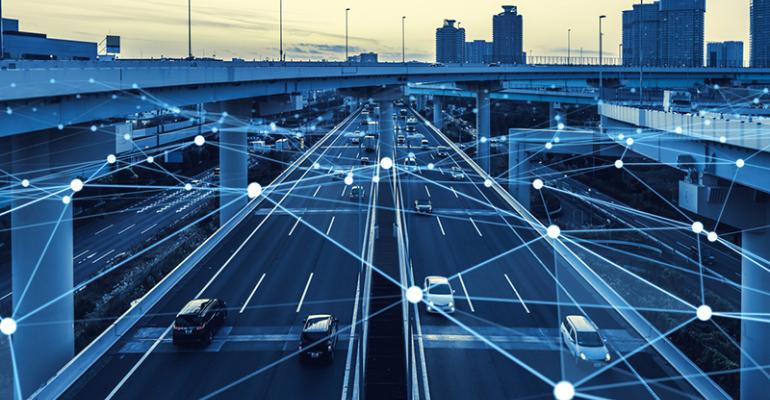The COVID-19 pandemic has had an impact on every aspect of society. It’s altered how many of us live, work and play, and dramatically impacted driving behavior.
One troubling trend since the onset of the pandemic is the rising number of vehicle crashes and related deaths and serious injuries. For Americans under the age of 54, vehicle collisions are the leading cause of death. In this piece, I’ll explore some of the factors contributing to the rise of traffic violence, while delving into some ways state and local transportation and public safety planners can tackle this critical issue using smart, data-driven technology solutions.
Speed is one of the most critical safety issues if someone lives or dies in a vehicle crash. Higher speeds significantly increase the likelihood of death. Higher speeds also increase a driver’s reaction time and braking distance while reducing the driver’s field of vision.
Unfortunately, speeding is on the rise since COVID-19. This may be because many drivers got used to fewer vehicles and law enforcement. However, in many places, speeds haven’t fallen in line with rising traffic levels.
When the pandemic hit, we experienced the biggest plunge in travel in a century. It’s no secret the pandemic had a widespread impact on traffic patterns; the effects of working from home are still being felt in major American cities. Many believe that travel patterns are forever changed.
Yet in 2023, we see many areas where total miles of travel are surpassing pre-COVID levels, even as traditional downtown activity still is largely suppressed. While people may not be commuting to downtown as much, other trips were introduced during the day, from running errands during lunch to picking kids up from school. While these trips may be shorter than their commute, people are taking multiple trips per day, which can total more overall miles traveled.
With an increase in miles traveled and speeding, as well as shifting traffic patterns across all modes, we’re caught in a perfect storm that is fueling more crashes. According to the National Highway Traffic Safety Administration (NHTSA), fatalities from vehicle collisions declined for three years but skyrocketed to a 20-year high during the pandemic. However, NHTSA notes traffic fatalities dropped in the first three months of 2023. Good progress, but more work is necessary to sustain this short-term trend.
Tackling the collision crisis is a priority for transportation and public safety agencies to achieve a future with zero traffic deaths, an international movement known as Vision Zero. However, the issues won’t be solved with a one-size-fits-all solution. That’s where smart transportation data comes into play. Every city, road and highway needs to be evaluated uniquely.
Questions needing to be asked include: Have prior infrastructure projects resulted in an increase or decrease in speed? How many people are walking and bicycling along the street? What risky driving behaviors might indicate a future crash?
Data can’t answer these questions, but it can begin painting a picture for city leaders. There are new data sources and analytics focused on identifying and quantifying risk factors to assist agencies in developing and assessing the impact of strategies focused on achieving Vision Zero.
Smart transportation data, which is defined as the transportation insights powered by location-based data from vehicles, cell phones and other objects on the roadway, can also identify patterns of driver behavior that can be used to reduce safety risks. For example, the Federal Highway Administration currently is offering guidance on Road Diet implementation to reorganize the street for more predictable movements between people walking, bicycling and driving.
While some assume a road diet equals higher congestion, it actually enhances safety by providing space for predictable movements (left turns, right turns, bicyclists, etc.) and calms traffic so that everyone pays more attention to their surrounding environment.
Let’s look at Rainier Avenue in Seattle. Once regarded as one of the most tumultuous roadways in the city, the Seattle Department of Transportation redesigned part of the road to reduce it from four to three lanes, resulting in a 15% decrease in overall collisions, a 40% decrease in pedestrian collisions and a 50% decrease in speeding in just the first year.
Having access to detailed data and insights can also help transportation departments identify harmful trends earlier to counteract issues sooner. For example, the Virginia Department of Transportation (VDOT) reported a 24% increase in traffic fatalities after COVID-related restrictions went into effect.

To better understand what caused this, VDOT set out to paint a detailed picture of the problem by gathering more in-depth data. It revealed patterns of excessive speeding based on time of day and day of the week, providing insights into the external factors that could be used to pinpoint safety initiatives earlier.
Transportation agencies of all sizes now have access to more detailed smart transportation data than ever before, for roadways, vehicles and demographics revealing the many external factors that impact collisions. With a major part of the bipartisan infrastructure law focused on safety, through the Safe Streets and Roads for All grants, there has never been a better opportunity to capitalize on these data-driven insights to make a real impact on safety.
Nat Gale (pictured, above left) is Head of Product for Safety View at INRIX, a transportation technology company.





